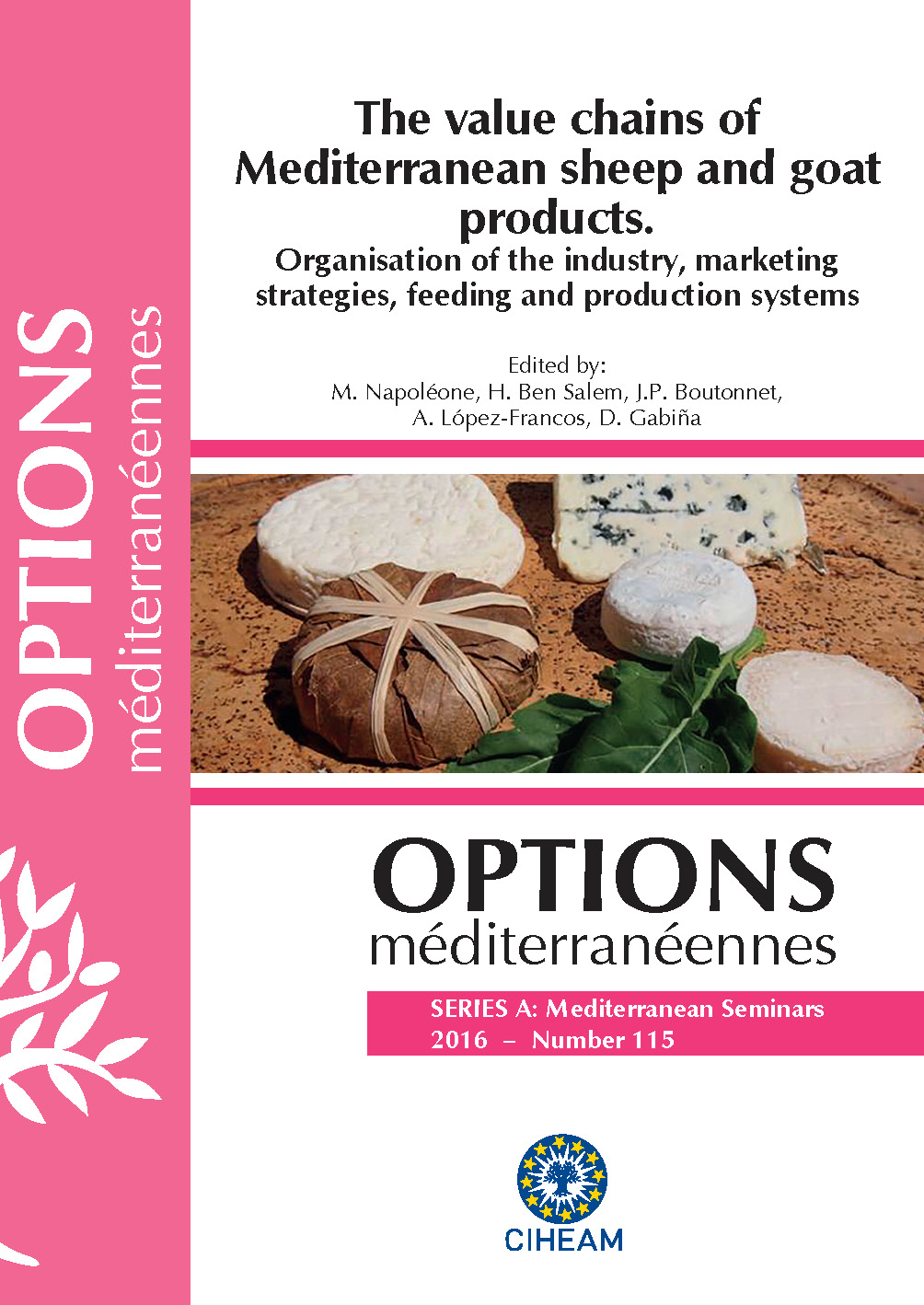| Article précédent | p. 95-99 | Article suivant |
Developing a value chain toolkit to support goat projects for smallholders: Learning from experiences of Nepal
The value chain analysis is generally conducted to build the competiveness and development strategy of an industrial or commercial sector. It is also increasingly mobilized by development agencies to identify how small farmers or livestock keepers, small enterprises or other target groups can play a larger and more lucrative role in a particular value chain and how a value chain’s structure or characteristics can be changed to enable it to grow in ways that benefit the targeted poor breeders. The objective of the paper is to present a methodology to analyze and consider value chain development from a concrete case in Nepal. This country has experienced a significant growth in the consumption of goat meat; supply does not meet the demand and is offset by animal imports from India. Production is mainly from very small farms and the level of technical knowhow of farmers and productivity are both very low; additionally, they are very dependent on traders to access the markets. A nationwide development strategy based on the analysis of value chains has been built collectively under the leadership of Heifer International in collaboration with several stakeholders including government agencies by associating technicians, scientists, representatives of the administration. Various participatory methods and mobilized sources of information were used to coherently integrate local projects in this strategy along with the objectives of the Millennium Development Goals. Those who participated during this process in Nepal have decided to mobilize their experience to formalize a general approach for the development of the goat sector to be used in other situations. The different participatory tools and methods are listed, the sources of information to be mobilized are identified and their relative relevance for analysis is discussed. This toolkit is designed to facilitate analysis of the complexity of relationships and balances of powers between the actors to define the most appropriate levers and act on the various links in the value chain for meat, dairy goat, and fiber commodities. This initiative is also a part of a broader study to scale up the success factors in the development projects of small family goat farms.
L’analyse de la chaine de valeur est habituellement utilisée dans la construction de la stratégie de développement de la compétitivité d’un secteur industriel ou commercial. Elle est également de plus en plus mobilisée dans la préparation des projets de développement pour identifier comment les élevages familiaux, les petites exploitations ou d’autres groupes cibles peuvent s’insérer dans la chaine de valeur de leur secteur d’activité et comment la structure de la chaine valeur peut être modifiée dans un sens qui bénéficie à ces éleveurs, leur permettre d’améliorer leurs revenus et développer leur activité. L’objectif de la communication est de présenter une méthodologie pour analyser et prendre en compte les chaines de valeur mise au point à partir d’un cas concret au Népal. Ce pays connait une croissance importante de la consommation de viande caprine; la production très déficitaire, compensée par une importation d’animaux depuis l’Inde est essentiellement réalisée par de très petits élevages dons la productivité est très faible, le niveau de formation très bas et très dépendant des intermédiaires pour accéder au marché. Une stratégie de développement à l’échelle nationale basée sur l’analyse des chaines de valeur a été construite collectivement sous l’impulsion de l’ONG Heifer International en collaboration avec différents acteurs dont des agences gouvernementales en associant techniciens, universitaires, représentants de l’administration. Les différentes méthodes participatives et sources d’information mobilisées ont permis d’intégrer de manière cohérente les projets locaux dans cette stratégie qui intègre par ailleurs les Objectifs du Millénaire pour le Développement. Les différents acteurs de l’approche réalisée au Népal ont décidé de mobiliser leur expérience pour formaliser une démarche spécifique au développement de filières caprines qui soit applicable pour d’autres contextes; lesdifférents outils et méthodes sont répertoriés, les sources d’information à mobiliser sont identifiées Leur pertinence respective pour l’analyse est discutée. Cette boite à outil vise à faciliter l’analyse de la complexité des relations et des rapports de forces entre les acteurs pour définir les leviers les plus pertinents et agir sur les différents maillons de la chaine de valeur en production caprine pour les orientations productives laitière, viande ou fibre. Elle s’intègre par ailleurs dans une analyse plus globale pour monter en généricité et améliorer les facteurs de succès dans les projets de développement de petits élevages familiaux caprins.
- [ Afficher ]
- [ Télécharger ]
- [ Exporter la citation ]
Vous pouvez télécharger la citation au format :
- [ Imprimer ]
-
Mots-clés
APPROCHES PARTICIPATIVES, CAPRIN, PROJET DE DEVELOPPEMENTCiter cet article
Dubeuf J.-P., Bhandari D., Thomas M. Developing a value chain toolkit to support goat projects for smallholders: Learning from experiences of Nepal. In : Napoléone M. (ed.), Ben Salem H. (ed.), Boutonnet J.P. (ed.), López-Francos A. (ed.), Gabiña D. (ed.). The value chains of Mediterranean sheep and goat products. Organisation of the industry, marketing strategies, feeding and production systems. Zaragoza : CIHEAM, 2016. p. 95-99. (Options Méditerranéennes : Série A. Séminaires Méditerranéens; n. 115). Joint Seminar of the Subnetworks on Nutrition and on Production Systems of the FAO-CIHEAM Network for Research and Development in Sheep and Goats, 2015/06/16-18, Montpellier (France) . http://om.ciheam.org/om/pdf/a115/00007260.pdf



